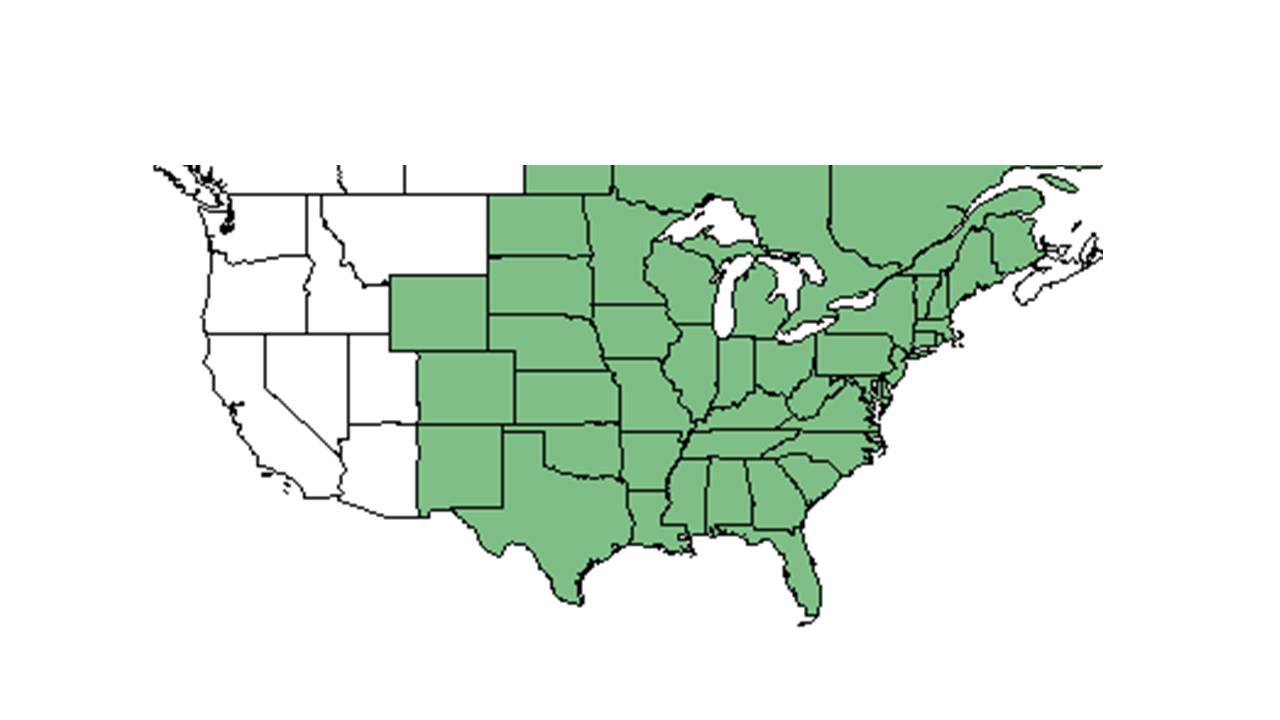Agalinis tenuifolia
| Agalinis tenuifolia | |
|---|---|
Error creating thumbnail: Unable to save thumbnail to destination
| |
| Scientific classification | |
| Kingdom: | Plantae |
| Division: | Magnoliophyta - Flowering plants |
| Class: | Magnoliopsida - Dicotyledons |
| Order: | Scrophulariales |
| Family: | Scrophulariaceae |
| Genus: | Agalinis |
| Species: | A. tenuifolia |
| Binomial name | |
| Agalinis tenuifolia (Vahl) Raf. | |

| |
| Natural range of Agalinis tenuifolia from USDA NRCS Plants Database. | |
Contents
Description
It is an annual plant (Hogg et al 1983).
Distribution
Agalinis tenuifolia is the most widely distributed throughout eastern North America (Musselman and Mann 1978).
Ecology
This species is a vigorous parasite. It formed haustoria on all 19 commercial species included in Appendix III. No clear host preference was shown, although hardwood species supported more parasitic attachments than pine species (Musselman and Mann et al 1978).
Habitat
Agalinis tenuifolia commonly grows in disturbed sites, including clear cut areas. Large populations may also be found growing at the margins of ditches and in other wet or moist habitats (Musselman and Mann 1978). It can be found in undisturbed grasslands and areas with low soil nutrients (Hogg and Morton 1983). It occurs on xeric limestone prairies of Illinois (Hogg et al 1983).
Phenology
Seed dispersal
Seed bank and germination
Fire ecology
Pollination
Use by animals
Native vegetation, often including Agalinis tenuifolia, can be completely destroyed and replaced by weeds and soil nutrients increase dramatically when Ring-billed Gulls and other species of gulls nest from April to June (Hogg et al 1983).
Diseases and parasites
Conservation and Management
Cultivation and restoration
References and notes
Musselman, L.J. and W.F. Mann, Jr. 1978. Root parasites of southern forests. General Technical Report SO-20. New Orleans, LA, USDA Forest Service.
Hogg, E.H. and J.K. Morton. 1983. The effects of nesting gulls on the vegetation and soil of islands in the Great Lakes. Canadian Journal of Botany 61:3240-3254.